I Had Ramen Every Day for a Week—Here’s What Happened
Updated: Dec. 15, 2023
For the sake of journalism.
Cue a resounding and unanimous amen from all my fellow broke, college students—eating ramen on a desperately consistent basis is an all too relatable procedure. Meals don’t get more elementary than those sodium-infested bags of goodness; what’s more effortless than throwing a solidified pack of noodles and powder into a pot and instantly having a meal ready for consumption on your dinner table?
Regardless, this didn’t come without a twang of guilt and concern; after all, we’ve all heard the finger-waggling lectures from our doctors and mothers telling us to stay away from the delightfully low-priced fare. When I asked why, I would always receive a simple “it’s bad for you,” without much accompanying explanation. Although I knew these quick meals were notorious for ridiculously high levels of sodium, I didn’t know how that would directly relate to my health on a short-term level. Obviously, ramen has its nutritional flaws, but how much could that popular culinary fix really affect your body? Is it worth sacrificing your health for a 99-cent meal? For the sake of journalism, I decided to find out.
I wanted to turn my occasional ramen rendezvous into a full-blown experiment to answer the age-old question of its effect on health, so I decided to eat ramen every day, for every meal, for five days. The rules were straightforward: I could munch on serving sides and accessorize the ramen in whatever way I desired, but the ramen had to be the main entree in every single course. In all honesty, I didn’t even have to venture to the store to stock up; I already had an embarrassingly large variety of ramen noodles to choose from in my cluttered pantry. Although I tried to resort to them as little as possible, it was always nice knowing it was there, and I would often boil up the packs as a side dish when my meal was relatively simple. As a personal preference, I despised those cheap Top Ramen noodles that you can snag from just about any local store; instead, I’d take the effort to pick up several (more expensive) packs when I went to a Korean grocery. So luckily, the plethora of noodle choices in front of me were quite extensive (and far more nutritious than your average cup of ramen).
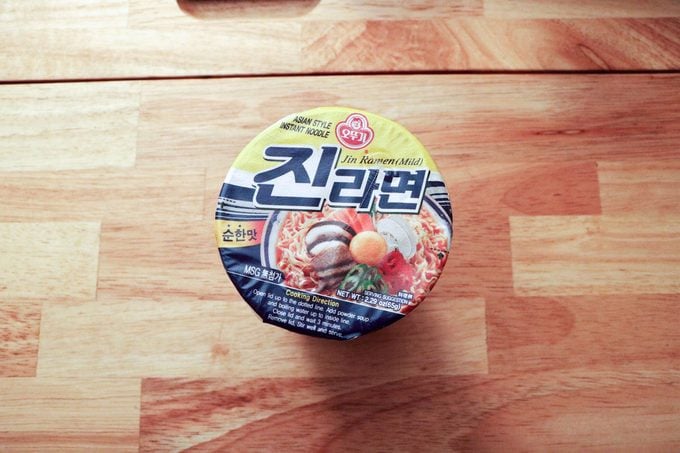
Day 1 started off as any normal day would; I boiled up a cup of Jin Ramen, and I was thankful for the effort saved of making an entire meal. I was saving time and money, and I couldn’t complain. Throwing in the comfortably straightforward packs of dried veggies and noodles in a bubbling pot, I felt confident that this would be a relatively easy accomplishment. I had no problem downing the entire bowl as it was; I even felt a little hungry afterward and could go for more.
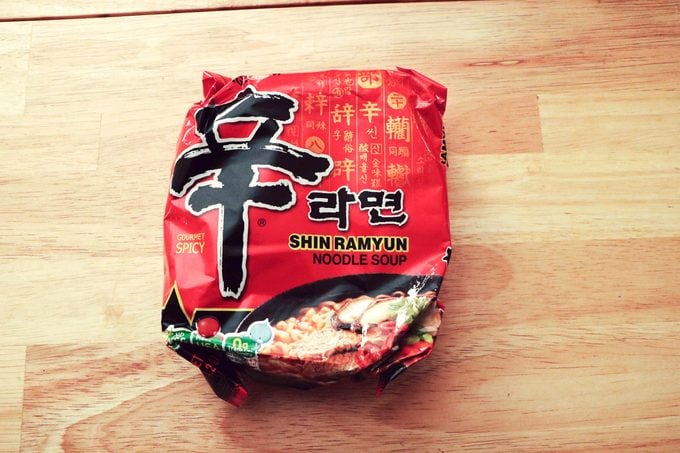
So, I was thankful when dinner rolled around and it was time to turn on the stove again for another noodle dish. This time, I went for the bright red package of classic Shin Ramen (a Korean favorite), and even threw in some extra veggies for good measure. In other words, the first day flew by with no complications. I was able to consume both dishes fairly quickly, and apart from a slight craving for burgers, my body felt entirely normal at the end of the day. I’m not the type to count calories with an end goal of losing weight, but in this case, I did check my weight and calorie count to prevent any unprecedented health issues during the week. So far, so good.
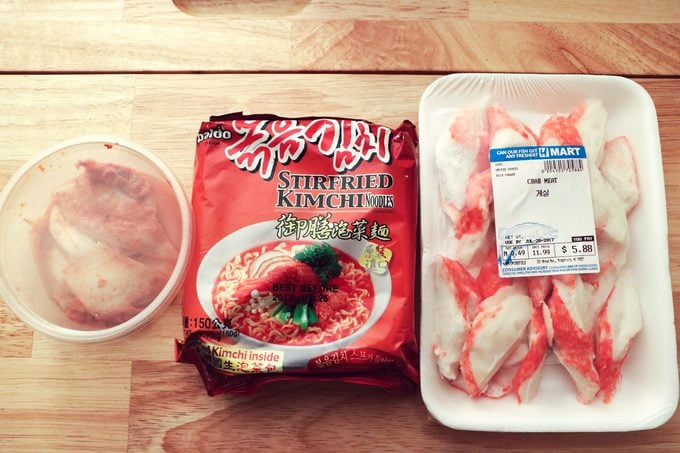
When I woke up to start Day 2, I did feel a little stale and fatigued, but nothing too out of the ordinary. I continued the process of eating ramen noodles in the morning (strange concept) with a pack of mild Ichiban and continued the day. I made sure to grab a cup for lunch at the office, and although I got a few inquisitions to my ramen choice, it all felt pretty standard. My body was soon back to its productive, sprightly ways, and I went through the day without much thought to my culinary experiment. For dinner, I ate a package of Paldo’s Stir-Fried Kimchi Noodles, a rather Korean take on ramen, to finish off. When I went to bed, I did note that I felt slightly lethargic, and I was overly eager to crawl into bed and call it a day.
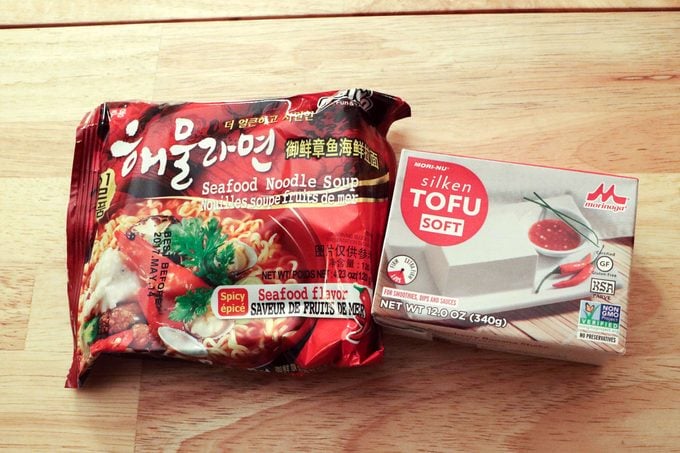
On Wednesday (Day 3), I woke up feeling pretty salty—probably because of all the sodium. My body was feeling pretty sluggish when I woke up, and all I wanted was to devour a bowl of crunchy green salad. Unfortunately, I still had two more days to go, so I decided to hack my meal to make it healthier. I threw in some slices of tofu and green onion to make my spicy seafood noodle ramen a little more edible, which made it much easier to down.
Lunch and dinner were pretty much the same; I was dreading mealtime and even considered just skipping a meal to make it easier on myself. Regardless, I forced myself to swallow the chunky noodle bites and continued my daily routine—much to my chagrin. There was a slightly nausea-inducing factor of simply talking about ramen, but I was able to rotate flavors to keep some spice (no pun intended) in mealtimes. I found that attempting to prepare the noodles in different ways and adding some additional ingredients (kimchi, veggies, tofu, mushrooms) made the experiment a little more bearable. Nonetheless, there are only so many things to do with ramen, and I was still consuming that ridiculous amount of sodium and cholesterol with every bite.
The sodium’s obvious in ramen—but your healthy diet might be packed with salt, too.
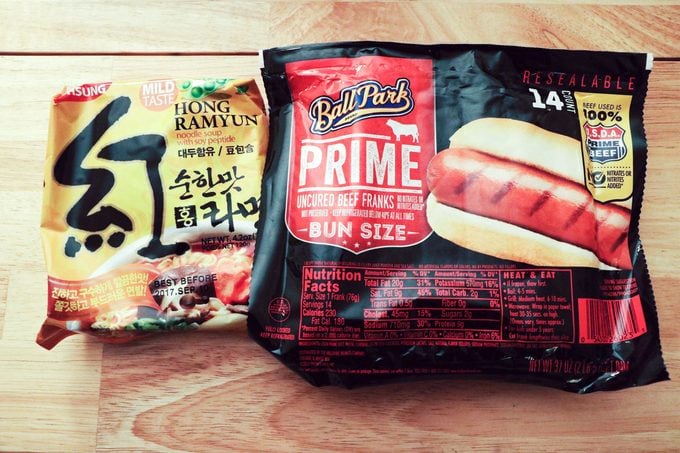
Thursday was probably the worst of all. It wasn’t that the meal options were repetitive; that didn’t bother me. My body was just feeling unsatisfyingly hollow even directly after eating; I was starting to miss that enjoyable feeling of fullness and goodness after a replete meal. I was also feeling rather queasy and sick, kind of what you feel directly after recovering from a cold, and my appetite was nearly nonexistent. Usually, I would look forward to a glass of wine with my dinner, but the only fluids I wanted to accompany the Hong Ramen meal I was consuming that day (yes, I shared my last name with my dinner) was tons of water. Here’s how you can drink more water throughout the day.
The sodium was definitely drying out my mouth, so I did end up drinking much more than I normally would. Even so, my brain was working a little slower than normal, and I had a complete lack of energy and motivation to get up from my seat unless absolutely necessary. All I wanted to do was sleep throughout the day.
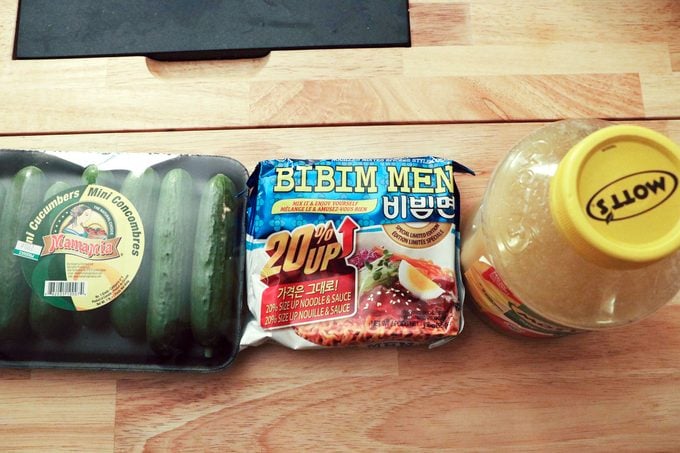
By the time Friday rolled around, I was just relieved that the experiment was over. Although it was slightly difficult to stomach the meals, I was able to eat them rather quickly with a renewed sense of gratitude. I don’t know if it was my newfound adrenaline rush or my body adjusting to the intake, but I felt better than the previous days had made me feel. Luckily, I was able to indulge myself in a Bibim Men, an instant noodle pack that is classified as ramen but definitely tastes less like it due to the fact that it has no soup; I downed it with a side of applesauce and some cucumber slices. Ultimately, I was eager for my first trip to Taco Bell; I was craving a beef burrito like no other. (If you’re in the mood for Mexican, try these delicious Mexican recipes.)
My results were both as predicted and quite surprising. One thing I noticed was that the effects were not just physical; I got incredibly moody and would snap at things that I would normally hold my tongue at (major thanks to my boyfriend for tolerating my unpredictable mood swings). The smallest things would annoy me, and I felt myself feeling irritable and cranky during the day.
At night, all I wanted to do was collapse. Although my body felt thoroughly comatose and unresponsive by the end of the week, I actually ended up losing four pounds (despite the alarming amount of carbs and calories I was consuming). It wasn’t exactly what I would deem an enjoyable, fun-filled week, but it was quite informative knowing my body could take to (and even potentially adjust to) the repetitive consumption. Although I did feel overwhelmingly moody and lethargic throughout the week and trudged to my dinner table like a kid walking into a dentist appointment, it didn’t affect my daily routine, and I was still able to complete everything that I needed to.
Admittedly, I did have a better variety of ramen to choose from and indulged in healthier fare to make the journey more bearable. Pricier ramen may be made with better ingredients, like wheat flour, which a 2017 study in Asia Pacific Journal of Clinical Nutrition says may improve nutrient intake. You’d also be surprised at the bounty of ramen options out there; dry and wet, spicy and mild, even some that include meat. Regardless, it’s definitely not something I would recommend on a daily basis; doing so long-term is said to incite high blood pressure and a higher chance of getting diabetes and heart disease. A 2017 study in Nutrition Research and Practice found that frequent consumption of instant noodles like ramen is associated with a higher risk of cardiometabolic risk factors, like higher triglyceride levels and higher blood pressure.
I was really thankful for the first clean meal I had at an actual restaurant at the end of my experience—a salmon avocado roll and some hearty miso cod soup. I think it’s safe to say that I’m going to be staying away from the ramen for the time being, but I’m not going to embark on a pantry purge and throw out all my ramen packs. I still harbor an appreciation for the quick fix and found that eating it on a consistent basis is doable due to its versatile nature.
If you do find yourself simultaneously staring at a desolate refrigerator and bank account, I definitely recommend trying to scrounge together any ingredients you can to throw in anything you can to up the health factor; eating supplementary greens and tofu did wonders for me, and they’re relatively cheap to pick up from the store. Besides that, don’t be too ashamed of dining on a ramen bowl every so often; just don’t be like me and eat it for every. single. meal.